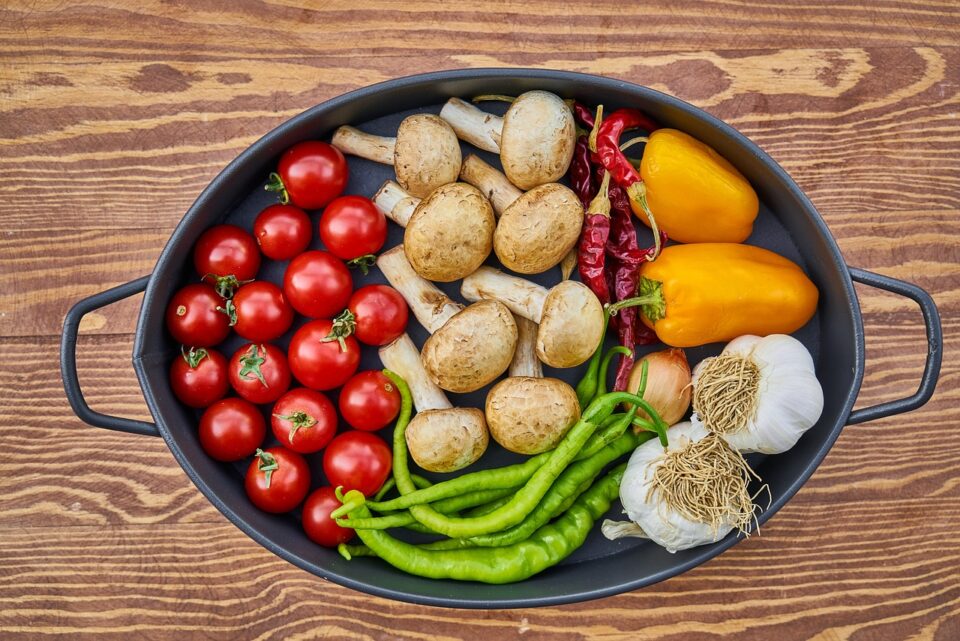Finding high-quality ingredients is a crucial aspect of cooking delicious, nutritious, and satisfying meals. Whether you’re a seasoned home cook or a beginner in the kitchen, knowing how to select the best ingredients can greatly impact the flavor, texture, and overall quality of your dishes.
Shop at reputable stores
When seeking high-quality ingredients for your meals, it is beneficial to shop at reputable stores that prioritize quality. Reliable grocery stores, farmers’ markets, and specialty food stores are known for their commitment to sourcing and offering top-notch products. These establishments understand the importance of freshness and quality, and they go the extra mile to provide a wide selection of fresh, local, and organic produce, meats, and other ingredients. By shopping at these stores, you can have confidence in the quality and integrity of the ingredients you purchase, enabling you to create meals that are flavorful, nutritious, and satisfying. Additionally, the knowledgeable staff at these establishments can often provide guidance and recommendations, further enhancing your culinary experience.
Check certifications
Checking for certifications on labels is an important step in ensuring the quality and integrity of the products you purchase. Certifications provide valuable information about various aspects such as organic production methods, animal welfare, sustainable practices, and fair trade. So if you are looking for high-quality barn laid eggs, check whether the suppliers have certifications such as Free Range or Certified Humane, ensuring that the hens have access to the outdoors and spacious barns for roaming and nesting. Additionally, read the labels and packaging carefully to check for any additional information about the farming methods used.
Look for fresh produce
When it comes to selecting fruits and vegetables, freshness is key to ensuring their optimal taste and nutritional value. To find fresh produce, there are a few things to keep in mind. Start by examining their appearance—look for vibrant colors that indicate ripeness. Avoid fruits and vegetables that have dull or faded hues. Next, assess the texture of the produce. It should be firm to the touch, without any soft spots or mushiness. Additionally, check for any bruises, cuts, or blemishes, as these can be signs of aging or damage. Another important aspect to consider is the smell. Fresh produce usually has a pleasant, natural scent. If you notice any strong or unpleasant odors, it could indicate spoilage. Lastly, avoid wilted or moldy produce, as these are clear indications of poor quality.
Buy in-season produce
Opting to buy in-season produce offers numerous benefits for both your meals and the environment. Seasonal fruits and vegetables are typically harvested at their peak, ensuring maximum freshness and flavor. Since they are grown and harvested locally, they often spend less time in transit, reducing the distance and time between the farm and your table. This not only contributes to their freshness but also helps minimize the carbon footprint associated with transportation. Local farmers’ markets are fantastic resources for finding in-season produce, as they often feature a wide array of freshly harvested fruits and vegetables.
Seek out local and organic options
When searching for high-quality ingredients, it is beneficial to seek out local and organic options. As well as the previously discussed benefits, shopping locally contributes to the growth of the local economy and fosters a sense of community. Then you also have organic foods which are cultivated without the use of synthetic pesticides, hormones, or genetic modification. They are produced through natural methods that promote soil health and biodiversity. When shopping, look for labels indicating organic certification, such as the USDA Organic Seal.
Checking meat and seafood quality
When it comes to meat and seafood, freshness is key, so choose cuts that are moist, vibrant in color, and have minimal odor. Avoid meat or seafood that appears slimy, discolored, or has a strong fishy smell. Pay attention to the packaging and ensure that it is properly sealed and free from any leaks or damage.
If possible, consider opting for organic, free-range, or sustainably caught options. Organic meat and seafood come from animals raised without the use of antibiotics or hormones, promoting better animal welfare. Free-range options indicate that the animals had access to open spaces and a natural diet. Sustainable fishing practices ensure that seafood is caught in a way that minimizes harm to the environment and maintains healthy fish populations.
Read labels and ingredients
Take the time to carefully examine the information provided on the product labels. Look for simple, recognizable ingredients that you are familiar with. Avoid products that contain excessive additives, preservatives, or artificial flavors, as these can negatively impact the taste and nutritional value of the food. Opt for products with shorter ingredient lists, as this often indicates a more natural and wholesome composition. By being mindful of the ingredients in packaged foods, you can choose products that align with your dietary preferences and health goals, and ensure that you are consuming high-quality and nourishing meals.

Grow your own herbs and vegetables
Growing your own herbs and vegetables is a rewarding and sustainable way to build a healthier lifestyle by ensuring you have high-quality ingredients for your meals. If you have the space, consider starting a small garden or growing herbs in pots. By doing so, you have complete control over the growing process, from choosing the seeds or seedlings to nurturing them until harvest. Homegrown ingredients allow you to experience the satisfaction of picking fresh produce right from your own garden. You can also be certain of their quality, as you have full knowledge of the growing conditions and can avoid the use of pesticides or synthetic fertilizers if you prefer organic methods.
In conclusion, finding high-quality ingredients for your meals is essential for enhancing flavor, nutrition, and overall enjoyment. By following the tips mentioned, such as shopping at reputable stores, seeking out fresh produce, checking for certifications on labels, and considering local and organic options, you can make informed choices that align with your values. Additionally, paying attention to the quality of meat and seafood, reading labels and ingredients, and even growing your own herbs and vegetables provide you with greater control over the ingredients you use and the satisfaction of using fresh, homegrown produce.

